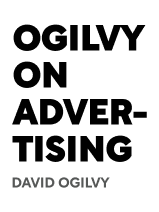

This article is an excerpt from the Shortform book guide to "Ogilvy On Advertising" by David Ogilvy. Shortform has the world's best summaries and analyses of books you should be reading.
Like this article? Sign up for a free trial here .
What is advertising research? How can advertising research help create great ads, and test your ads for their effectiveness?
Advertising research takes into account a lot of factors. When doing advertising market research, you can take into account product, company, economic, and advertising factors to gather marketing information.
Read more about advertising research and factors you should consider when researching.
Advertising Research
Now that we know the basics of marketing, we’ll look at using advertising research to check if we’ve successfully applied them. We’ll also use this research to inform our advertising in Part 2.
Factors to Research
There are two things advertising research can’t tell you, so you’ll have to use your judgment:
- How to price your product. (At the time of writing, marketers just picked numbers and hoped they worked.)
- Which campaigns will be most effective in the long term.
However, when it comes to other factors, ad research can tell you a lot:
Product Factors
Factor #1: Product development. Studying your competitors’ test markets, profit margin, and cost of goods can tell you what kinds of products do well.
Factor #2: Early consumer feedback. Avertising research can tell you what people think of a product before you manufacture it. If there’s little interest, you can abandon the project before investing too much money into it.
Factor #3: Product quality. Once your product is available for sale, research can tell you what consumers think of it compared to the competitor’s products. If they don’t like your product best, you can ask your R&D to improve it.
Factor #4: Important features. Research will tell you what people consider when deciding whether or not to buy your product.
Factor #5: Extras. Research can predict which smells, colors, flavors, and recipes will be most popular.
Factor #6: Packaging. Research will tell you which package designs are likely to attract the most attention. Additionally, it can tell you if your package is so hard to open that it discourages people from buying it.
Factor #7: Vocabulary. Research can find out what vocabulary people use when talking about products in your category.
Factor #8: Line extension. Research will tell you what additional products might do well under the same brand name.
- For example, after Dove became a successful body soap, Lever Brothers considered what else they might associate the brand name with. Their advertising market research accurately discovered that dish soap was most likely to be successful.
Factor #9: Fall from grace. Research can alert you when customers lose interest in your product.
- For example, if you change an ingredient and public opinion of your product drops, research will alert you.
Company Factors
Factor #1: Reputation. Research will tell you what consumers, politicians, media, and groups think of your company.
Economic Factors
Factor #1: Projected sales and advertising expenses. Mathematical models can tell you how much you’ll need to spend on advertising to make the most profit.
Factor #2: Premiums. Research will tell you which premiums (promotional items) people prefer.
- For example, Shell considered 35 different premiums, and their research revealed that steak knives would be most popular.
Advertising Factors
Some adpeople dislike advertising market research because they think it stifles creativity. Ogilvy, on the other hand, found that it inspired good ideas and legitimized the most outlandish ones.
- For example, when Ogilvy wanted to write headlines that advertised France in French, everyone thought this would be a disaster, but advertising research showed that it would be effective.
Here are the advertising factors to consider researching:
Factor #1: Promise. Promise is what people most want your product to help them achieve. It’s one of the most important parts of advertising, and Ogilvy believes determining it is the most valuable contribution research can make. You can research promise in two ways:
- In a survey, show consumers a list of promises for new products and ask which they think are most important and unique.
- Use a split-run test: Write two ads with two different promises. At the end of both, offer a free sample. Run the ad somewhere that allows you to show one ad to half the circulation and the other ad to the other half. Whichever promise results in more requests for free samples is the more effective one.
Factor #2: Target audience. Research can tell you if you’ve successfully predicted who will be most interested in your product.
Factor #3: Clarity. Ad research will tell you if your ads are saying what you think they are.
Factor #4: Readership and recall. Research will tell you what parts of your ads people read and remember.
Factor #5: Expiration. Research will tell you when consumers are tired of hearing about a particular theme.
- For example, for five years, Shell advertised good mileage. When ad research indicated people were no longer interested in mileage, Shell switched to giving testimonials

———End of Preview———
Like what you just read? Read the rest of the world's best book summary and analysis of David Ogilvy's "Ogilvy On Advertising" at Shortform .
Here's what you'll find in our full Ogilvy On Advertising summary :
- What the "father of advertising" has learned from his decades' of experience
- How to craft easy-to-understand ads that work
- The 6 pioneers of the advertising industry






